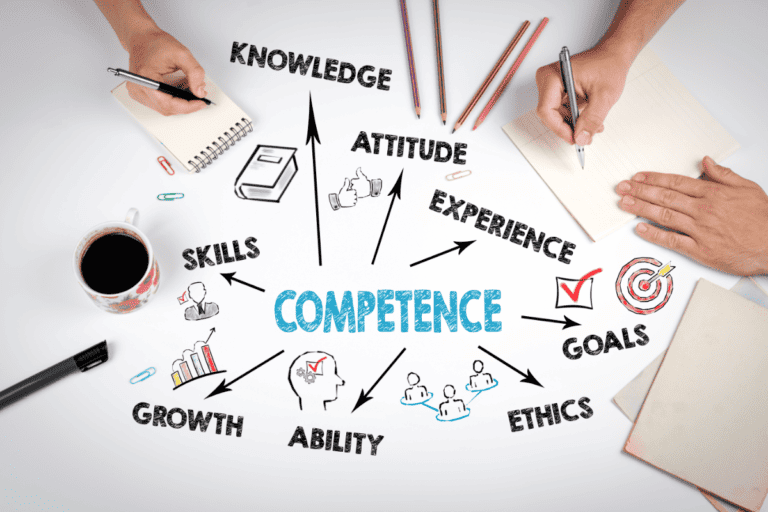Advanced Management Skills
In today's rapidly changing and competitive business environment, the need for advanced management skills has never been more crucial. As organizations navigate through complex challenges and opportunities, leaders must possess a diverse set of capabilities to effectively drive their teams and businesses forward.
From strategic decision-making to adeptly managing change, the demand for managers with advanced skills is evident. The question remains: what are the key competencies that distinguish exceptional managers in today's dynamic landscape?
Key Takeaways
- Strategic thinking: Developing long-term plans and considering the organization's vision and goals
- Decision-making: Making informed decisions based on analysis and considering potential impacts
- Problem-solving: Identifying and resolving issues and obstacles to achieve desired outcomes
- Leadership development: Investing in leadership skills and fostering growth in others
Strategic Decision-Making
Strategic decision-making is a critical process that involves analyzing complex situations, identifying the best course of action, and implementing plans to achieve long-term organizational goals. It requires a comprehensive understanding of the internal and external factors that can impact the organization. Risk assessment is a fundamental component of strategic decision-making, as it involves evaluating the potential risks and uncertainties associated with different courses of action. Decision analysis plays a crucial role in this process, using tools and techniques to systematically evaluate and compare alternative choices.
Effective strategic decision-making requires a methodical approach that incorporates both qualitative and quantitative factors. It involves assessing the potential outcomes of different decisions, considering the likelihood of success, and understanding the potential impact on the organization. This process is essential for identifying opportunities and mitigating potential threats.
Leaders and managers must possess the skills to navigate through complex decision-making processes, considering short-term and long-term implications. Utilizing risk assessment and decision analysis allows organizations to make informed decisions that align with their strategic objectives and contribute to their overall success.
Effective Communication Techniques
Navigating through complex decision-making processes requires leaders and managers to possess effective communication techniques that enable them to convey strategic decisions clearly and persuasively to their teams and stakeholders.
Two essential components of effective communication are active listening and assertive communication. Active listening involves fully concentrating, understanding, responding, and remembering what is being said. It is a fundamental skill that helps leaders and managers comprehend the viewpoints of their team members and stakeholders, fostering a culture of open dialogue and trust.
Additionally, assertive communication is crucial for conveying ideas, setting boundaries, and making decisions with confidence and respect. It involves expressing thoughts and feelings directly, honestly, and appropriately, while also acknowledging the rights and opinions of others.
Conflict Resolution Strategies

An organization's ability to effectively manage conflicts is pivotal for maintaining a harmonious and productive work environment. Conflict resolution strategies encompass a range of mediation techniques, negotiation tactics, de-escalation methods, and problem-solving approaches. These strategies are essential for addressing and resolving interpersonal disputes, differences in opinion, or conflicting interests within the workplace.
| Conflict Resolution Strategies | Description | Benefits |
|---|---|---|
| Mediation Techniques | Involves a neutral third party facilitating a discussion between conflicting parties to reach a mutually acceptable resolution. | Fosters open communication and understanding between parties, leading to sustainable solutions. |
| Negotiation Tactics | Involves direct discussions between conflicting parties to find a mutually beneficial outcome. | Allows for compromises, preserves relationships, and helps in achieving win-win solutions. |
| De-escalation Methods | Focuses on reducing tension and emotions in a conflict situation to prevent escalation. | Promotes a calm and rational approach, leading to better decision-making and effective conflict management. |
| Problem-Solving Approaches | Involves collaborative efforts to identify the root causes of conflicts and develop solutions. | Encourages teamwork, creativity, and long-term resolution of underlying issues. |
Implementing these conflict resolution strategies can enhance employee morale, teamwork, and overall organizational effectiveness.
Advanced Team Building
To achieve advanced team building, it is crucial to foster synergy among team members, ensure role clarity, and effectively address conflicts.
Synergy in teams allows for the combination of individual strengths to achieve a collective goal, while role clarity ensures that each team member understands their responsibilities and contributions.
Additionally, conflict resolution skills are essential for maintaining a harmonious and productive team dynamic.
Synergy in Teams
Fostering synergy within teams is a critical aspect of advanced team building, as it directly impacts the overall effectiveness and performance of the group.
Team dynamics and collaboration techniques are essential in creating synergy. By understanding individual strengths and weaknesses, team members can be strategically placed to complement each other, maximizing the group's potential.
Group cohesion is also crucial, as it strengthens the bonds between team members, leading to a more unified and productive team.
Collective problem-solving further enhances synergy, as it encourages the sharing of diverse perspectives and ideas, resulting in more innovative and effective solutions.
Role Clarity
Role clarity is essential for ensuring that each team member understands their responsibilities and contributions within the group, thereby maximizing efficiency and productivity.
Clear expectations and role definition are fundamental in establishing role clarity. When team members have a clear understanding of what is expected from them and their specific roles within the team, it eliminates confusion, reduces conflict, and enhances overall performance.
Effective role clarity also aids in fostering a sense of accountability and ownership among team members, leading to a more cohesive and motivated team.
It is the responsibility of the team leader to communicate and define each member's role clearly, ensuring that everyone is aligned with the team's objectives.
Ultimately, role clarity is a cornerstone of successful teamwork and organizational performance.
Conflict Resolution
Effective conflict resolution is integral to maintaining the cohesion and productivity established through role clarity within a team, contributing to advanced team building and sustained organizational performance.
Active listening plays a crucial role in conflict resolution, enabling team members to fully understand each other's perspectives and concerns. By actively listening, individuals can demonstrate empathy and create an environment conducive to resolving conflicts amicably.
Additionally, mediation techniques are valuable in facilitating constructive discussions and negotiations to reach mutually beneficial resolutions. Mediators can help parties in conflict to clarify their interests, identify common ground, and work towards solutions that address the underlying issues.
Change Management
Change management is a critical aspect of effective leadership. It encompasses the need for clear and transparent communication during times of transition. Maintaining high levels of employee engagement is essential to ensure smooth and successful change implementation.
Thus, in the following discussion, we will explore the significance of effective communication and employee engagement in the context of change management.
Communication During Change
Amidst organizational transformations, adept communication strategies are crucial for fostering understanding and engagement among employees.
Effective communication during change management involves several key aspects:
- Change Communication: Clear and consistent messaging regarding the reasons for change, its potential impact, and the vision for the future is essential. This helps employees grasp the purpose behind the changes and reduces uncertainty.
- Organizational Culture: Communication should be tailored to align with the existing organizational culture, ensuring that the messaging resonates with employees and reflects the values and norms of the organization.
- Change Resistance and Leadership Alignment: Addressing change resistance requires open and honest communication, along with strong leadership alignment. Leaders should convey a unified message and actively engage with employees to mitigate resistance and build support for the change initiative.
Employee Engagement
Navigating change management successfully requires a concerted focus on fostering employee engagement. This involves ensuring that the workforce is actively involved and committed to the evolving organizational landscape. Motivating employees during times of change is crucial for maintaining productivity and morale.
This can be achieved through open and transparent communication. By acknowledging their concerns and involving them in the decision-making process, employees feel valued and included. Building trust is equally essential in fostering employee engagement.
Leaders should demonstrate integrity, consistency, and empathy to establish trust with their teams. Encouraging a culture of open feedback and recognizing employee contributions also helps in building trust. Ultimately, by prioritizing employee engagement, organizations can create a supportive environment where employees feel valued, motivated, and committed to navigating change effectively.
Performance Management and Feedback

Performance management and feedback are critical components of effective leadership and organizational success. To ensure a culture of continuous improvement and development, leaders must implement robust strategies for providing feedback and managing performance. Here are three key aspects to consider:
- Feedback Culture: Cultivating a feedback culture within the organization is essential for fostering open communication and growth. Leaders should encourage regular feedback exchanges among team members and promote a coaching approach to feedback, where constructive criticism is delivered in a supportive and developmental manner. This approach not only helps in addressing performance issues but also contributes to the overall professional development of individuals within the organization.
- Performance Optimization: Performance management should focus on optimizing the capabilities of employees. This involves setting clear performance expectations, providing regular feedback, and offering support and resources to help individuals meet their goals. Constructive criticism plays a crucial role in this process, as it allows employees to understand areas for improvement and take necessary actions to enhance their performance.
- Data-Driven Feedback: Leveraging data and performance metrics can provide valuable insights for delivering feedback. By utilizing quantifiable data, leaders can offer specific and objective feedback, making the feedback more impactful and actionable for the recipients.
Conclusion
In conclusion, the development of advanced management skills is an essential aspect of successful leadership in complex and dynamic business environments.
By mastering strategic decision-making, effective communication, conflict resolution, team building, change management, and performance management, leaders can navigate challenges with finesse and achieve positive outcomes.
Embracing these skills allows for the effective management of various organizational complexities and encourages a culture of continuous improvement and growth.






